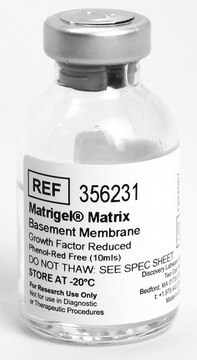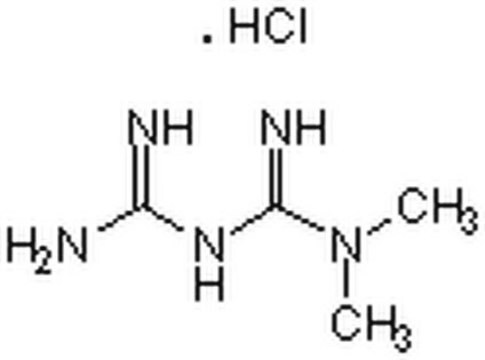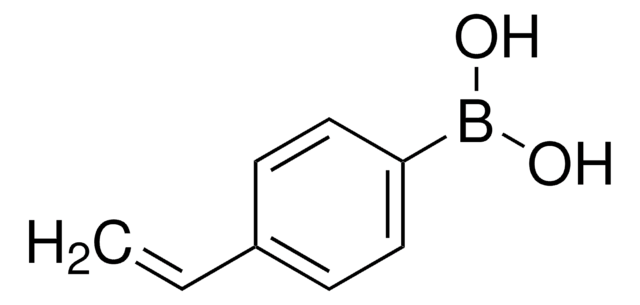T8260
Lipoic acid, reduced
analytical standard
Sinonimo/i:
(±)-6,8-Dimercaptooctanoic acid, (±)-Dihydrolipoic acid, DL-6,8-Thioctic acid, reduced, DHLA
About This Item
Prodotti consigliati
Grado
analytical standard
Livello qualitativo
Saggio
≥98%
Forma fisica
liquid
tecniche
HPLC: suitable
gas chromatography (GC): suitable
applicazioni
cleaning products
cosmetics
food and beverages
forensics and toxicology
personal care
veterinary
Formato
neat
Stringa SMILE
OC(=O)CCCCC(S)CCS
InChI
1S/C8H16O2S2/c9-8(10)4-2-1-3-7(12)5-6-11/h7,11-12H,1-6H2,(H,9,10)
IZFHEQBZOYJLPK-UHFFFAOYSA-N
Applicazioni
Confezionamento
Avvertenze
Danger
Indicazioni di pericolo
Consigli di prudenza
Classi di pericolo
Acute Tox. 4 Oral - Aquatic Chronic 2 - Eye Dam. 1 - Skin Irrit. 2 - Skin Sens. 1
Codice della classe di stoccaggio
10 - Combustible liquids
Classe di pericolosità dell'acqua (WGK)
WGK 2
Punto d’infiammabilità (°F)
348.1 °F - Cleveland open cup
Punto d’infiammabilità (°C)
175.6 °C - Cleveland open cup
Dispositivi di protezione individuale
Eyeshields, Gloves, type ABEK (EN14387) respirator filter
Scegli una delle versioni più recenti:
Possiedi già questo prodotto?
I documenti relativi ai prodotti acquistati recentemente sono disponibili nell’Archivio dei documenti.
I clienti hanno visto anche
Il team dei nostri ricercatori vanta grande esperienza in tutte le aree della ricerca quali Life Science, scienza dei materiali, sintesi chimica, cromatografia, discipline analitiche, ecc..
Contatta l'Assistenza Tecnica.














